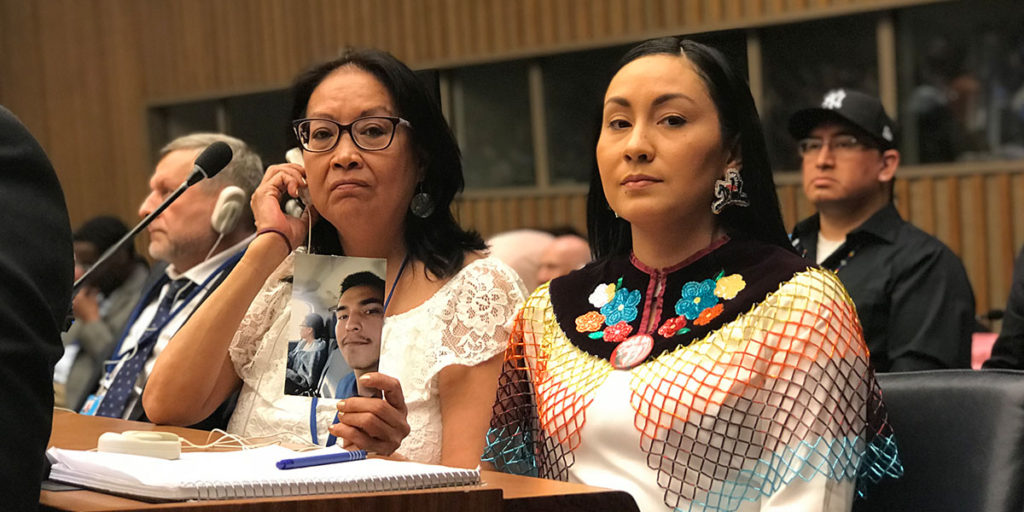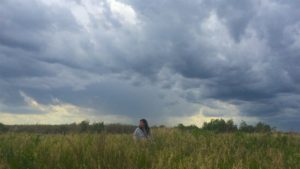
Indigenous filmmaker Tasha Hubbard unflinchingly tackles interesting stories. Her previous documentary Birth of a Family depicts, obviously, her own family’s process of perpetual healing. She now has a new movie nîpawistamâsowin: We Will Stand Up. And here, she turns her focus towards another Cree family whose healing process is more difficult. This difficulty comes from the violent death of one of its members. In August 9, 2016, Colten Boushie, died under the hands of a white settler, Gerard Stanley. Surviving family members discuss how social media became a haven for the settlers to blame Boushie for his death. Stanley faces a trial for Boushie’s murder under the Canadian justice system. But it seems like the latter, with the help of the police, is protecting the former. God forbid Stanley face scrutiny from both the media and the Cree community.
Hubbard uses both straightforward documentary film-making and the occasional animation segments. And with both methods, she connects Boushie’s story with that of systemic oppression. One that Indigenous people faced under the settler government. She narrates this story, showing their ancestors as children. These children had to watch the execution of a few adult Cree males for rising against the settler government. The government would eventually force these children into the Residential School system, which would kill many. That system is no longer in place, but what would replace it would be equally pernicious. Settlers are now murdering young Indigenous people and would get sham trials that would exonerate them, encouraging Indigenous dehumanization. The animation style Hubbard uses is impressionistic, effectively evincing the sadness that Indigenous people would experience for seven generations.

Boushie’s death reminds the Cree community of frightful eras both past and present. But it also leads to discussing between the generations experiencing them. Hubbard’s children ask their biological grandfather about the Cree word for justice. The grandfather gives them a concrete example from history. He connects justice with treaty agreements that were hollow and did not fulfill the expectations of Indigenous people. Moments like this hopes to spark an interest with both settlers, in all our diversity, and young Indigenous people. We can learn so much from these past generations’ ways of thinking. Bittersweet scenes like this also subvert stereotypes about Indigenous people. This film reminds its settler audience of the former’s untapped intelligence.
That intelligence also shines when Hubbard documents the conversations within the Boushie and Ferguson family. She closes up on the face of Boushie’s sister, Satin Ferguson. She talks about the many indignities she and other Cree people face during the trial process. One of these processes include the jury selection. There was hope that one of the jury members will come from the Cree community. The courts called a Cree man to the court. The defense, however, objected to his presence in the jury, making the rest of the members all white. Sure, Stanley deserves to face a jury with his own ‘people’. But the fact is that the victim is a Cree man. And the court didn’t allow anyone to speak on his behalf. The emotional honesty both in front of and behind the camera while talking about this is undeniable.
The film is at its best when it focuses on either Hubbard’s family or Boushie’s. It’s also good when it’s angry, as Hubbard lets us know who this doc is for. It’s for people of color who are angry, making them confront that emotion in its ugliness. Understandably then, she paces those high emotions with facts about the case, which she presents through the courtroom proceedings. The courtroom is necessary in this story. The trial sometimes border on ridiculousness, like when the defense uses internet posts as facts. But the dryness of the other facts of the case, as well as Hubbard’s narration style doesn’t help. Neither do the courtroom sketches, a staple of the crime doc sub genre. This can distance the audience from the characters who we see in flesh and blood.
This is, otherwise, a solid doc. One of case’s ‘silver linings’ is the plot arc where it turns Ferguson into a media savvy activist. Hubbard astutely doesn’t let us savor that and show that as a silver lining. She, like most marginalized people, would probably rather have more living relatives. That’s better than spreading awareness about the factors leading to these relatives’ untimely deaths. What Hubbard does instead is to portray both the animosity and ally-ship that Boushie and Ferguson’s family experienced. There are many people, mostly settlers, who flagrantly expose their boorish hatred of Indigenous people to the world. But there are just as many people who, finally, legitimize the voices of Indigenous people. Who show their love and compassion, helping out the Cree people. A people who strive on despite of decades worth of pain.
nîpawistamâsowin: We Will Stand Up is opening at the TIFF Bell Lightbox.
- Release Date: 5/31/2019

